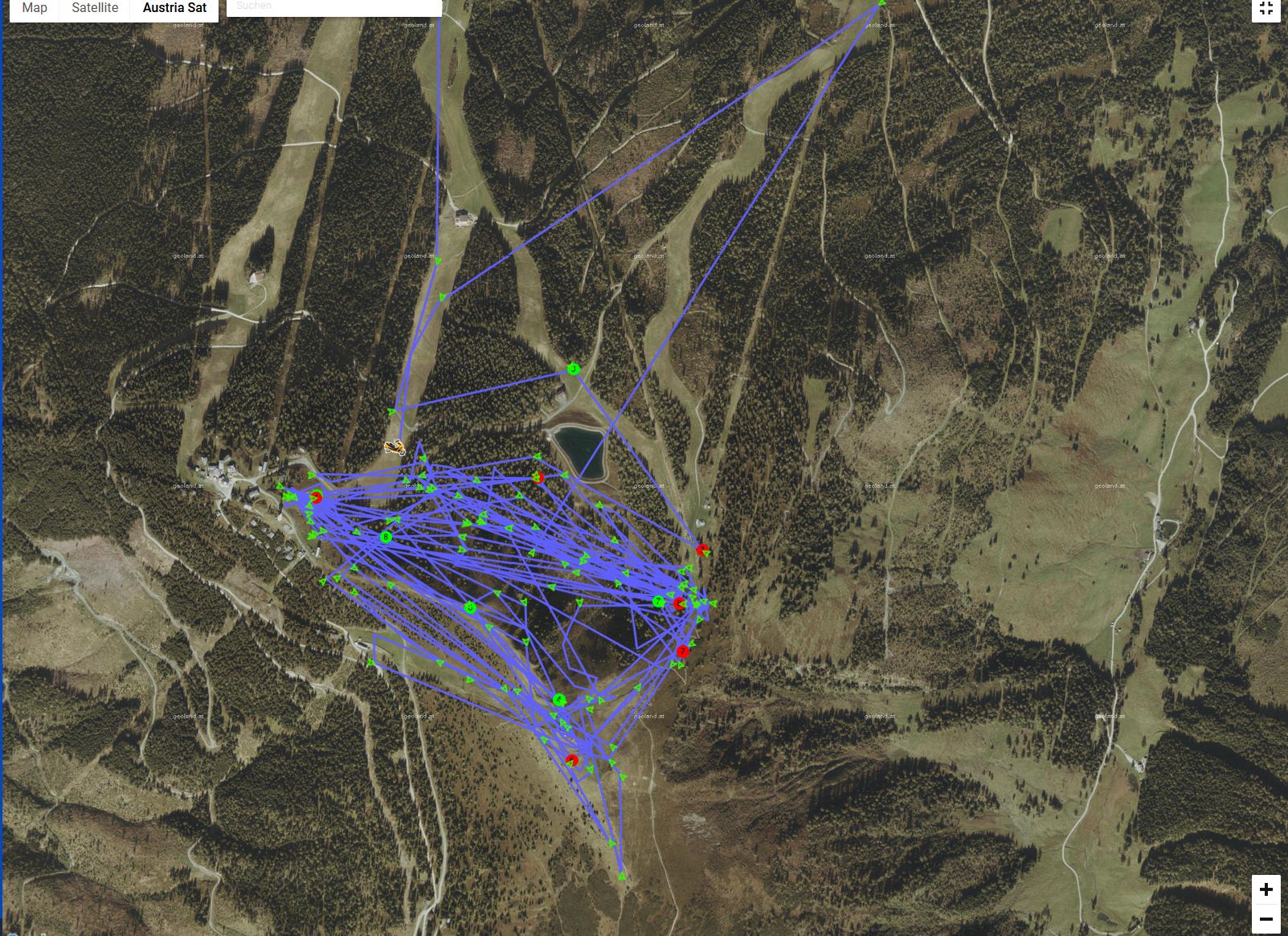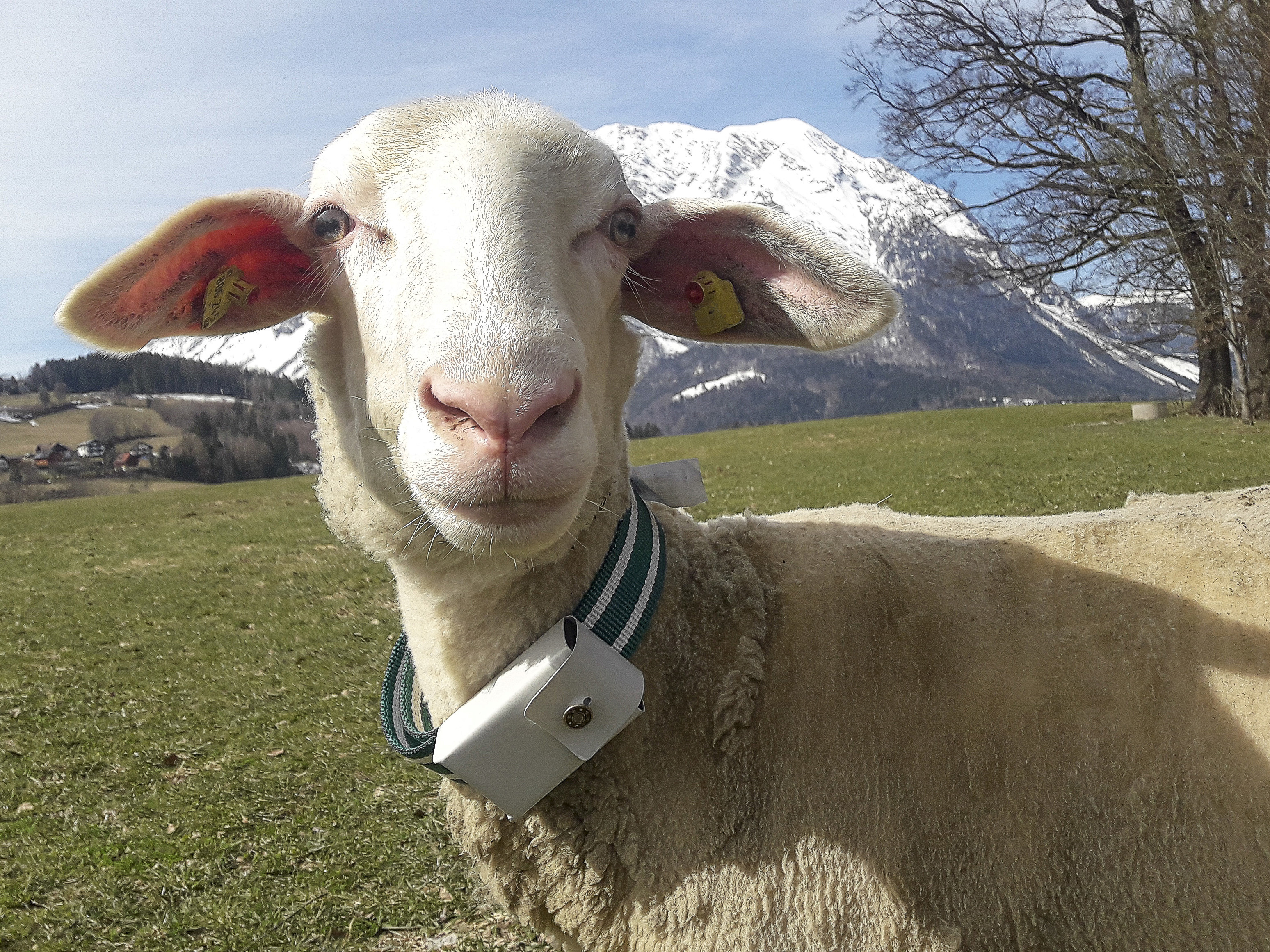The HBLFA Raumberg-Gumpenstein, the Sölktäler Nature Park and the Liezen District Chamber of Farmers started the “Pasture GPS” project this summer (2019). GPS trackers, originally from vehicle monitoring, are adapted and used to determine the position of grazing animals. Three companies are taking part in this project with their products. These are the company Infostars with a battery tracker and a battery tracker, the company Simpletrack with a battery tracker and the company Qtrack with a battery tracker.
Cattle and sheep are herd animals and usually stay together on pastures. For smaller groups of animals, one or two GPS trackers are used. If there are different groups of animals that are spread out spatially, each group gets a tracker. 78 companies with 138 trackers are currently taking part in this project. Part of the costs for the devices were borne by the state of Styria and the Sölktäler Nature Park.
Initial experience showed that the devices sent their position data even when mobile network coverage was poor. Using the tracker's position data, the shepherds can see the current location of their animals on their cell phone or on a stationary computer and locate them specifically. The time saved for searching for animals in confusing pastures is enormous and significantly simplifies the work of the alpine staff. Due to the positive experiences of tracker users, other companies have already reported that they want to equip their animals with a GPS tracker next year.
A current case shows the advantages of GPS tracking. The bell of the cow “Rosalie”, on which the GPS tracker was also mounted, was missing. Vacationers took the bell with them as a souvenir. Thanks to the GPS signal, the bell was found in Germany and confiscated by the police and returned to the owner.
An additional benefit of this technology is that the position data can be used to determine the grazing intensity on individual areas of the pasture. This can be a tool for pasture optimization in the next grazing period.








